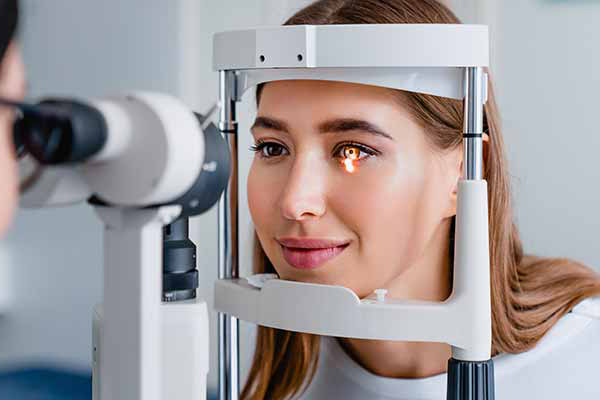Neurologist in Andalusia: Leading Specialists and Clinics Noted
Neurologist in Andalusia: Leading Specialists and Clinics Noted
Blog Article
The Pros and Cons of Different Refractive Surgical Procedures for Improved Eyecare

LASIK Surgical Treatment
LASIK surgical procedure is a typically executed refractive procedure that intends to deal with vision concerns such as astigmatism, farsightedness, and nearsightedness. Throughout the procedure, a thin flap is created on the cornea, and a laser is made use of to improve the underlying tissue, fixing the refractive error.
One of the main advantages of LASIK surgical treatment is the quick enhancement in vision experienced by lots of people. A lot of people discover a significant improvement in their sight shortly after the treatment, with very little downtime required for recuperation. Furthermore, LASIK is recognized for its high success rate and low incidence of problems when performed by experienced cosmetic surgeons. Like any kind of surgical procedure, LASIK additionally lugs some dangers, consisting of dry eyes, glare, halos, and under or overcorrection of vision. It is vital for people taking into consideration LASIK surgical treatment to go through a complete analysis by an eye treatment specialist to identify if they appropriate candidates for the procedure.
PRK Procedure
The PRK procedure, additionally understood as Photorefractive Keratectomy, is a type of refractive surgical treatment that intends to deal with vision issues similar to LASIK surgical procedure. Unlike LASIK, which entails developing a flap in the cornea, PRK functions on the surface layer of the cornea.
Among the advantages of PRK over LASIK is that it gets rid of the threat of flap-related problems given that no flap is created throughout the surgical procedure. This can be valuable for individuals with slim corneas or those associated with contact sporting activities where eye injury is a possibility. However, the recuperation time for PRK is typically longer contrasted to LASIK, as the external layer of the cornea needs time to restore after the treatment. Regardless of the longer recovery period, PRK can be an appropriate alternative for people looking for vision modification surgical treatment.
SMILE Surgery
A sophisticated refractive surgical treatment method obtaining popularity in the area of ophthalmology is SMILE Surgical treatment. Small Incision Lenticule Removal (SMILE) is a minimally intrusive treatment that remedies vision by improving the cornea using a femtosecond laser. Unlike conventional LASIK surgical procedure, SMILE Surgical procedure entails producing a small incision in the cornea to draw out a lenticule, which results in less disruption to the corneal structure and possibly quicker recovery times.
Among the primary benefits of SMILE Surgery is its ability to deal with myopia (nearsightedness) and astigmatism with high precision, causing exceptional visual end results for clients. The minimally invasive nature of the treatment also minimizes click here for more the risk of complications such as completely dry eye syndrome, making it a positive alternative for people seeking refractive surgery.

LASEK Technique
Having discovered the benefits and factors to consider of SMILE Surgery, one more significant refractive surgical procedure strategy worth taking a look at is the LASEK Technique. LASEK, which represents Laser-Assisted Subepithelial Keratectomy, is a form of laser eye surgical procedure that aims to deal with refractive errors such as myopia (nearsightedness), hyperopia (farsightedness), and astigmatism.
Unlike LASIK, LASEK does not entail developing a corneal flap. Rather, throughout a LASEK treatment, the surgeon makes use of a diluted alcohol remedy to loosen up the thin outer layer of the cornea, recognized as the epithelium. This layer is then carefully moved apart to enable the laser to reshape the underlying corneal tissue. Once the cornea has been reshaped to the preferred he has a good point level, the epithelial layer is repositioned.
One of the main benefits of LASEK is that it can be suitable for individuals with thin corneas that may not be great prospects for LASIK. In addition, LASEK usually causes minimal post-operative discomfort and a quicker recuperation time compared to PRK. Nevertheless, the aesthetic recovery process with LASEK might be slightly longer than with LASIK.
Implantable Contact Lenses
Implantable Contact Lenses provide a lasting vision improvement solution for people looking for an option to traditional get in touch with lenses or glasses. These lenses, additionally called phakic intraocular lenses, are operatively inserted into the eye to correct refractive errors such as nearsightedness (nearsightedness), hyperopia (farsightedness), and astigmatism. andalusia pediatrics. Unlike conventional call lenses that rest on the surface of the eye, implantable call lenses work within the eye itself, providing clear vision without the requirement for day-to-day upkeep or removal
One of the vital advantages of implantable get in touch with lenses is their permanence. As soon as placed, they can remain in the eye indefinitely, providing secure and constant vision correction. Furthermore, these lenses can be an excellent alternative for individuals who are bad prospects for laser eye surgical procedure or who like a relatively easy to fix vision improvement treatment.
However, implantable get in touch with lenses do bring some threats, consisting of the possibility for cataracts or increased eye pressure. It is important for people considering this alternative to speak with an eye treatment specialist to determine if implantable contact lenses are the best choice for their specific requirements and eye health and wellness.
Verdict
In final thought, each kind of refractive surgery has its very own advantages and downsides. LASIK surgical procedure is preferred for its quick recuperation time, while PRK procedure might be ideal for individuals with slim corneas.
Generally, SMILE Surgical treatment offers an encouraging option for individuals looking to enhance their vision through refractive surgery.
Report this page